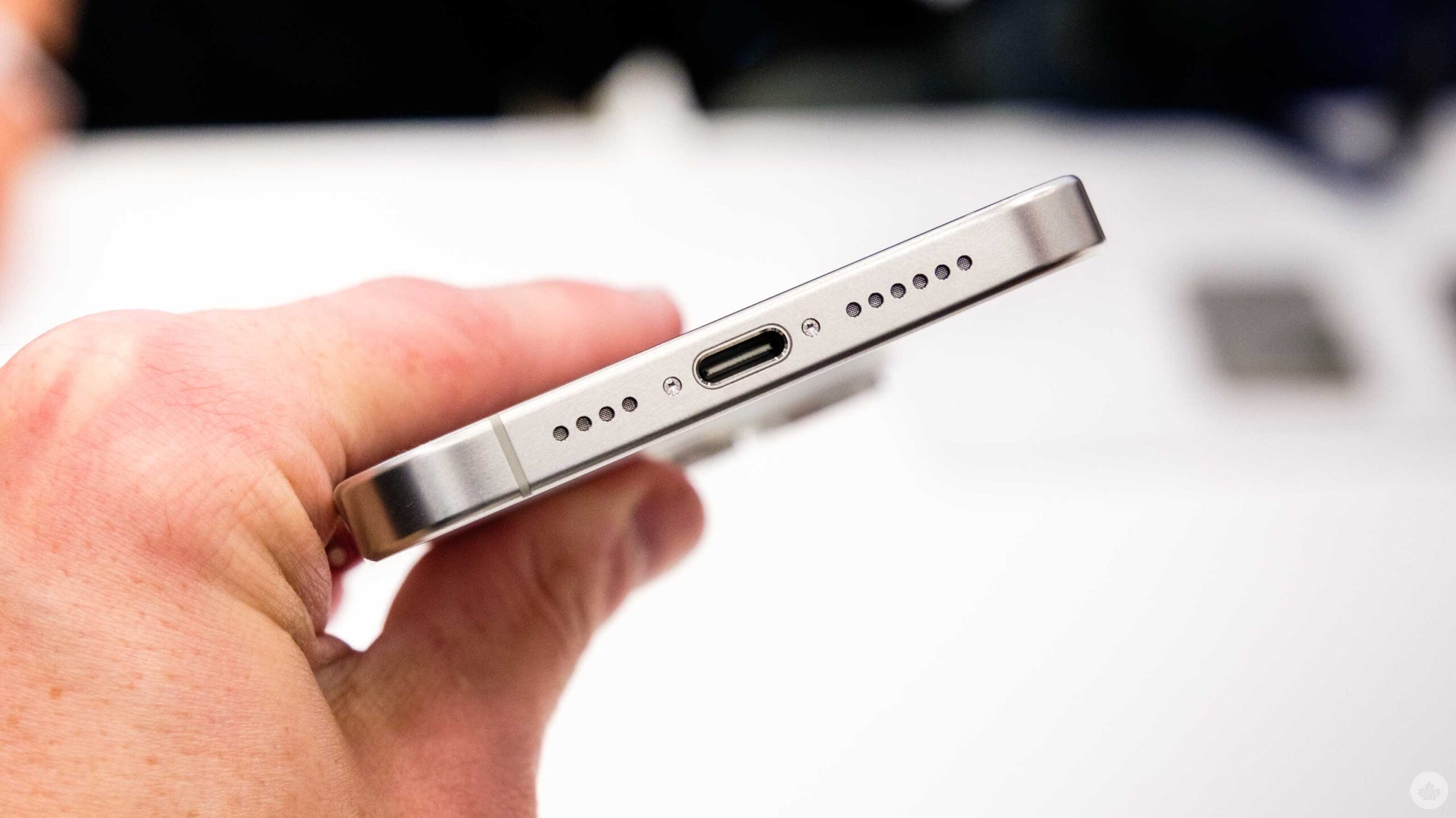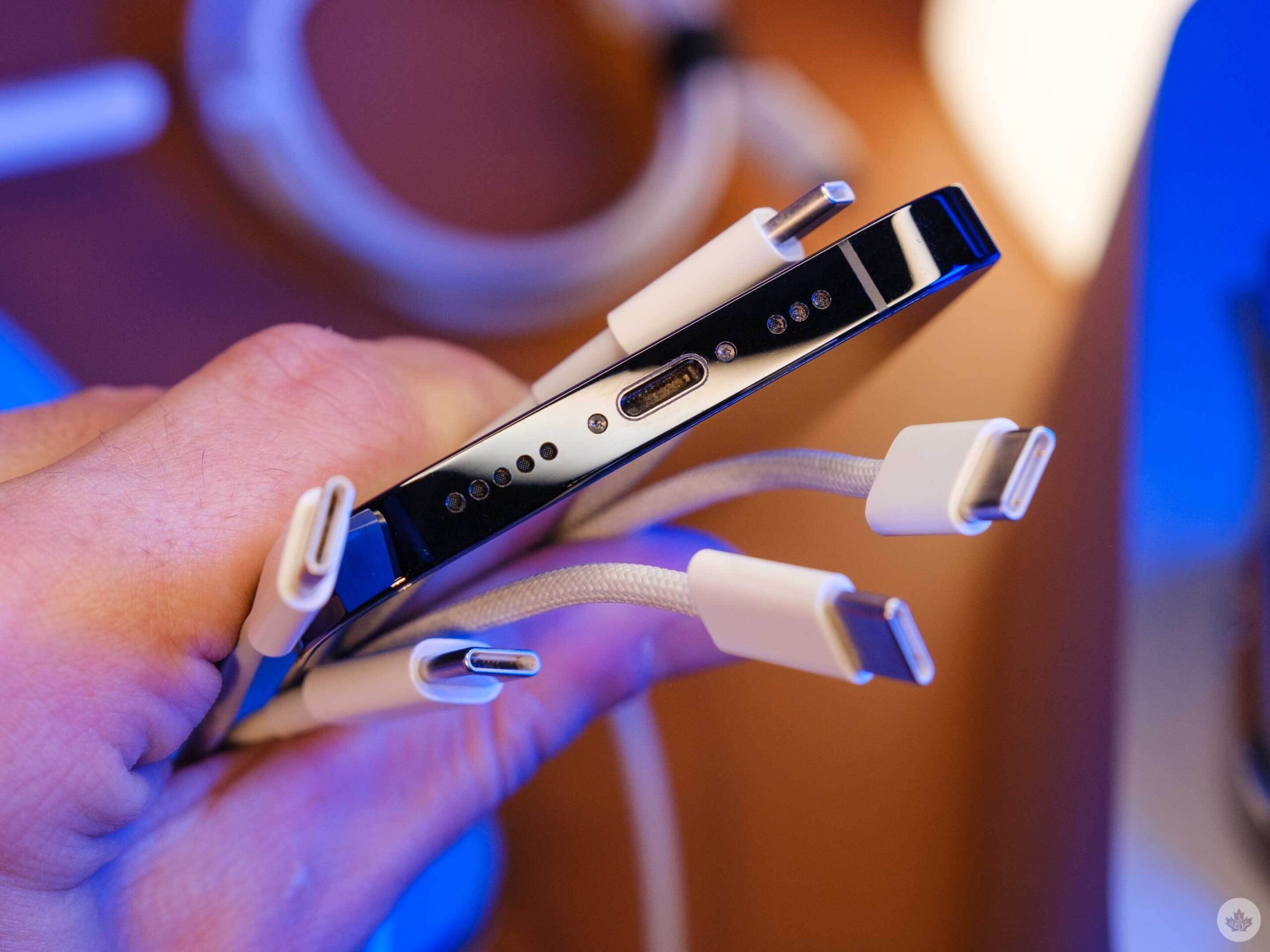
Well, Apple went and did it — there’s now USB-C on the iPhone.
As was rumoured and repeatedly leaked ahead of the company’s September 12th ‘Wonderlust’ event, the iPhone 15 series ditches Apple’s proprietary Lightning port for USB-C. This is a huge change for several reasons, but Apple didn’t talk about the primary catalyst behind the move: the EU.
During the event, Apple touted USB-C as a “universally accepted standard” and moved right along to discussing the benefits of the port, such as being able to charge all your Apple devices with one cable. It also highlighted some additional benefits for the iPhone 15 Pro and Pro Max, such as the ability to instantly capture and transfer images and videos to a connected Mac over USB-C.

Image credit: Apple
But while Apple may want people to believe it added USB-C for the good of consumers, the simple truth is Apple switched to USB-C because it had to.
Back in 2022, the European Union (EU) finalized rules that require all phones sold in the region to use USB-C. Other products are (or will be) affected by the rule as well, though there are some exceptions. Unfortunately for Apple, the iPhone is not exempt.
That left Apple with a choice. It could launch a USB-C iPhone exclusively for the EU, which would have brought a host of other problems with it, or it could switch the iPhone to USB-C across all regions. Apple went with the latter, though the company wasn’t thrilled with being forced to change. Technically, Apple could have put off the change until the 2025 iPhone, but it seems the company decided to go ahead and rip the bandaid off.
What does a USB-C iPhone mean for you?
The impact of iPhones switching to USB-C will differ widely for people. First and foremost, if you’re not buying an iPhone 15, then the change probably won’t mean anything to you right now. Down the line, there could be an impact if you decide to upgrade to a USB-C-equipped iPhone, so you’ll have time to prepare for that switch.
For those who plan on upgrading to an iPhone 15, there are a few things to consider, most of which fall under one main umbrella: Do you have a Lightning accessory you use regularly? For example, do you plug your iPhone in to charge every night with a Lightning cable? Do you have a Lightning cable to connect your iPhone to your car? The more Lightning accessories you use, the more the USB-C switch will impact you.
That said, Apple is taking small steps to mitigate issues from the change, such as including a USB-C to USB-C cable in the box. However, if you want an adapter to make use of existing Lightning accessories, it’ll run you $39. Plus, if you have other Apple products that use USB-C, you can use accessories across all of them now.
Ultimately, you’ll inevitably need to upgrade or replace some accessories to work with the new USB-C port on the iPhone 15 and future devices. When that time comes, you’ll need to contend with Apple’s Made For iPhone (MFi) program and find certified cables and accessories to ensure optimal performance, likely at a premium price. Beyond iPhone users, the USB-C change will have impacts on Android users, too, although I expect these will be mostly positive. First and more obvious, the change means eventually, you won’t have to worry about finding a charger when you’re hanging out with iPhone friends.
Beyond iPhone users, the USB-C change will have impacts on Android users, too, although I expect these will be mostly positive. First and more obvious, the change means eventually, you won’t have to worry about finding a charger when you’re hanging out with iPhone friends.
Charging compatibility woes aside, the other big change I expect will be an increase in available USB-C accessories. The accessory market for Apple devices is enormous, and on more than one occasion, I’ve seen iPhone accessories that I wished I could get for my Pixel. Going forward, accessories made to work with the iPhone’s USB-C port should, theoretically, work with Android’s USB-C port too.
Ultimately, the iPhone USB-C change should benefit most people except for the most diehard Lightning enthusiasts. While beneficial, it’ll be important to remember why Apple added USB-C — because of consumer and environment-facing EU regulations — regardless of what the company’s marketing might say.
MobileSyrup may earn a commission from purchases made via our links, which helps fund the journalism we provide free on our website. These links do not influence our editorial content. Support us here.



